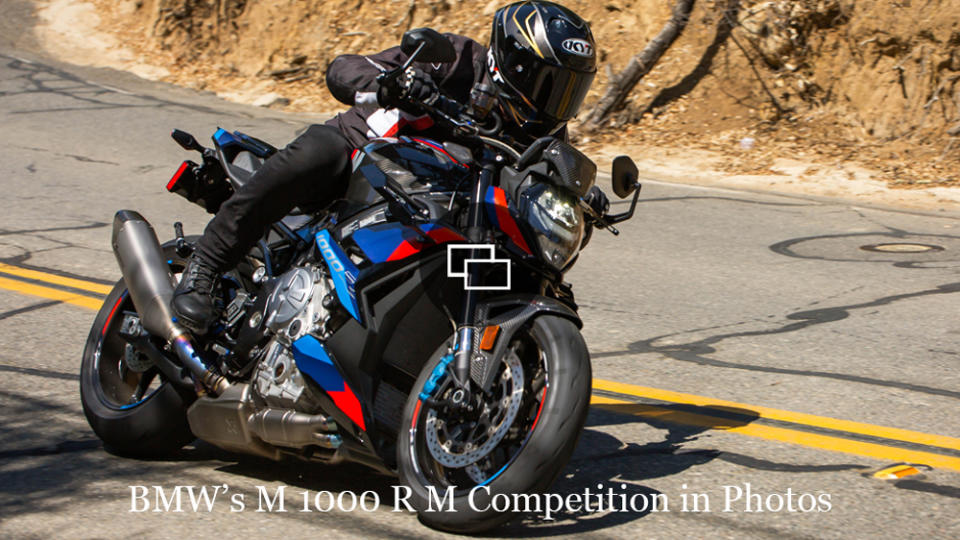First Ride: This 210 HP BMW Naked Bike Is Unabashedly Fast and Furious

Not so long ago, an output of 210 hp was reserved for only the fastest of factory-built race bikes. Now I’ve got it in my right hand, and I’ve got it on a naked bike. What a time to be a rider. The BMW M 1000 R M Competition is one of the fastest motorcycles I’ve piloted since the power race between the major manufacturers really started to take shape within the last 10 years.
This BMW’s spread of performance is immense as I crest yet another rise along Angeles Crest Highway in Southern California, a serene picture to the battle happening underneath me. At 80 mph, in sixth gear, I wrench the throttle open and the M flickers its traction control, a faint hint at the twist grip letting me know the race-spec electronics package is there to save me from myself. That’s at 80 mph . . . in sixth gear . . . not 50 mph in second gear. This gives you just a clue as to the performance hidden within this motor.
More from Robb Report
BMW's New Art Car Will Actually Race at 24 Hours of Le Mans Next Year
Forget a Sidecar, Bruh. BMW's New Electric Scooter Carries a Matching Surfboard.
BMW Motorrad Unveils Two Special-Edition, Chrome-Heavy Bikes to Celebrate Its 100th Birthday
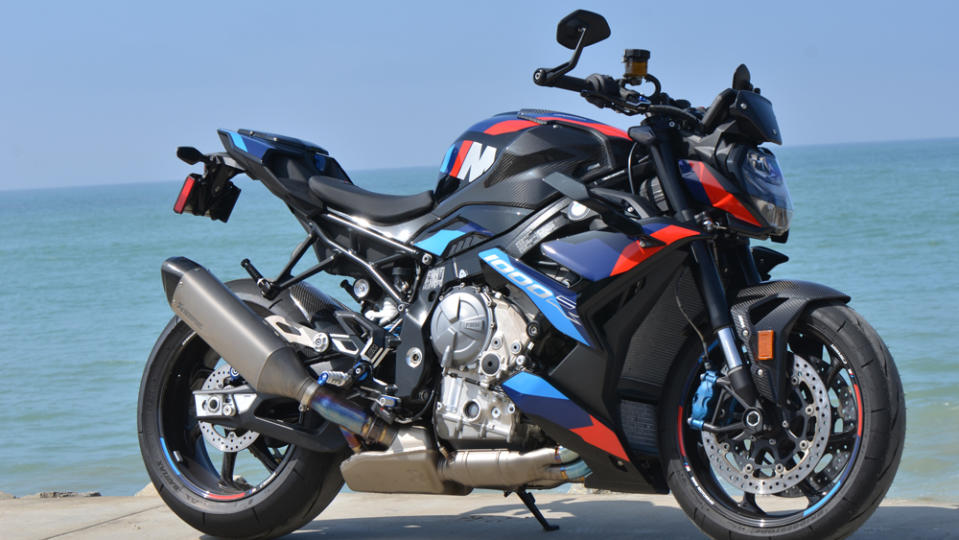
The brute acceleration is accompanied by a booming mechanical roar, first from the intake and then the exhaust. The $26,945 BMW M 1000 R M Competition—a $4,995 premium over the base M 1000 R—is a mix of lightweight carbon-fiber wheels and bodywork, fancy downforce winglets (that admittedly do very little at road speeds), evocative BMW M paintwork, and more electronic bells and whistles than could be covered in three road-test reviews, including sixteen-stage traction control, wheelie control, hill hold assist, track-specific ABS, and the list goes on. Oh, and did I mention it has a claimed 210 hp?
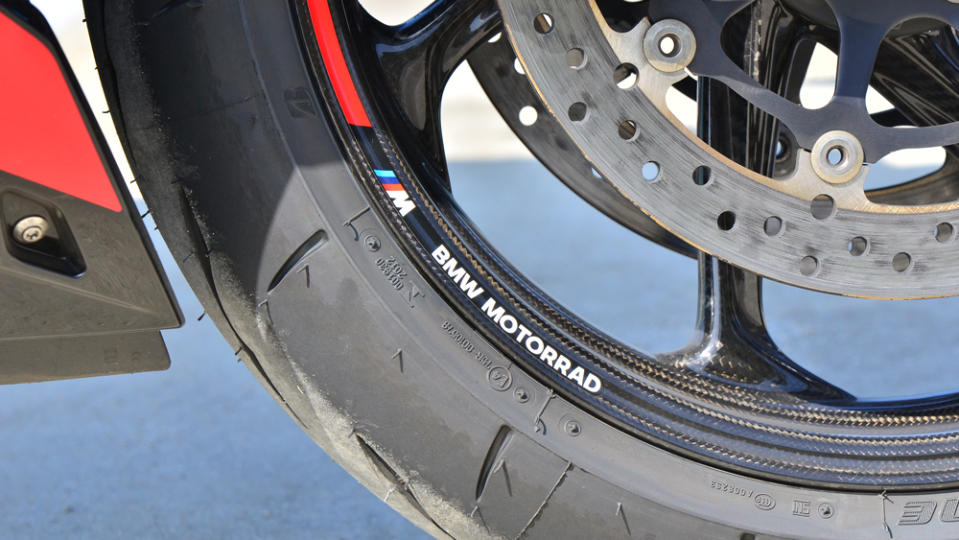
It’s a staggering piece of engineering, a reminder of what a company the size of BMW can do when the mood strikes. But it’s in no way perfect. BMW still hasn’t got to grips with the emissions police, who have seen to it that the area between 6,000 to 8,000 rpm is nothing more than a dead zone. The motor labors through this 2,000 rpm window, then screams to life and gives you the full force of its 999 cc four-cylinder power plant.
On the road, this isn’t so bad, as you’re not approaching the kind of speed and rpm that would normally be reserved for the track, at least I hope not. However, on a closed circuit, this dead zone will become a source of frustration as you want the motor to spin up as fast as possible, and here, it’s gone to lunch.
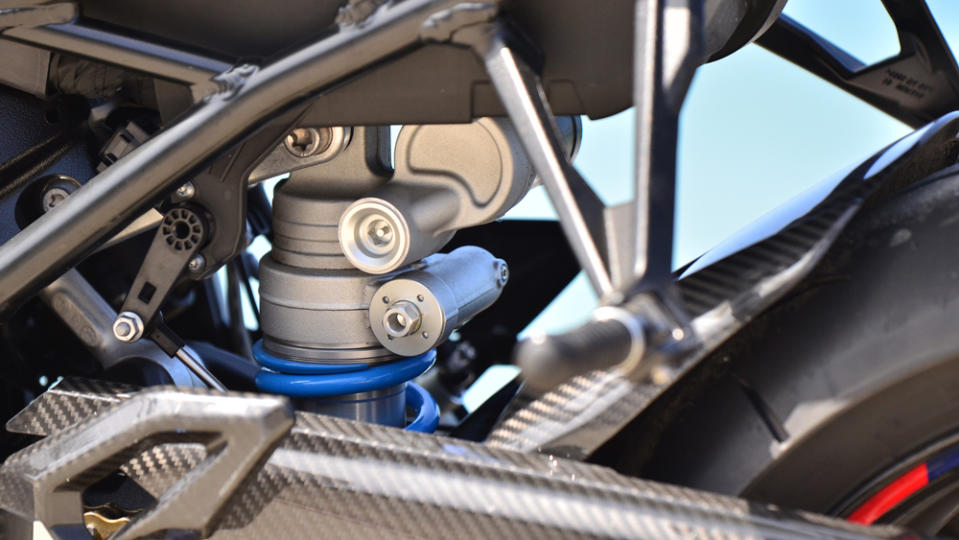
Another area that BMW still hasn’t mastered is eliminating vibration. A ride from Orange County to Ventura, Calif., had my hands buzzing like I’d just pulled them out of an electrical socket. This is a problem that BMW has had for many years, right back to the early days of the S 1000 XR, and it’s disappointing to see this vibration still present in a machine of this quality. However, the rest of the bike is top-notch.
The M 1000 R M Competition runs electronically adjustable Marzocchi forks and shock running under BMW’s Dynamic Damping Control (DDC), which changes the suspension’s behavior in real time. There’s different base suspension-stiffness levels for each of the various ECU modes, and you can feel the bike soften immediately when going from the Race Pro mode back to the Road setting. Regardless, even in the softest setting, this is a stiffly sprung motorcycle. It has also taken most of its components from the previous generation S 1000 RR (not M 1000 RR) superbike, including the motor, which has seen a 21.5 percent gain from its previous delivery of 165 hp.
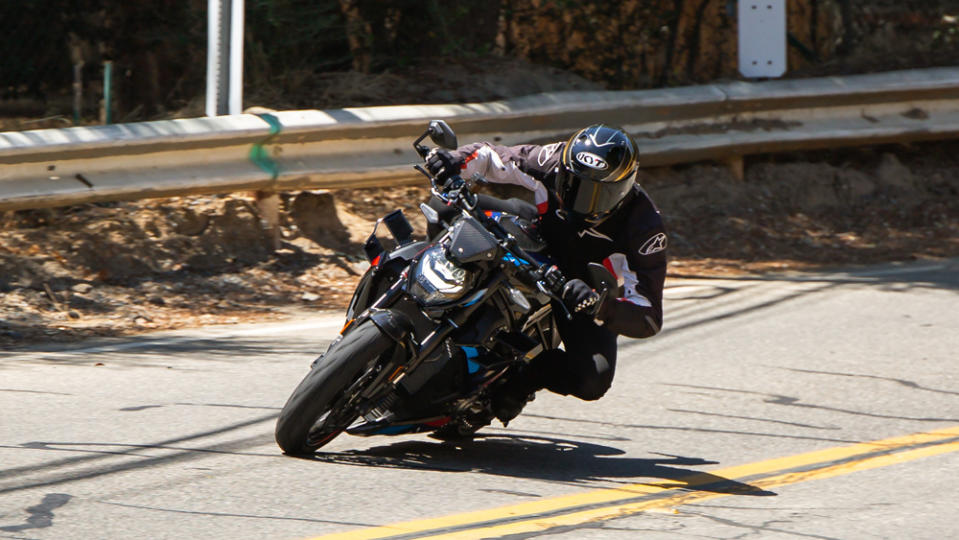
The M Competition package gives you more than just carbon wheels and fancy paint. Billet aluminum footpegs and anodized brake and clutch levers give the model variant a premium look and feel. And BMW also threw on a $1,895 titanium exhaust muffler as standard, which provides a bit of extra bark to match the intimidating bite. And, yes, it sounds absolutely mega with that exhaust.
BMW’s M 1000 R M Competition may not be perfect, but it’s very nearly so. It’s a wolf in wolf’s clothing, unapologetically fast, and a looker the likes of which BMW hasn’t made for years.
Click here for more photos of the BMW M 1000 R M Competition.
Best of Robb Report
Sign up for Robb Report's Newsletter. For the latest news, follow us on Facebook, Twitter, and Instagram.
